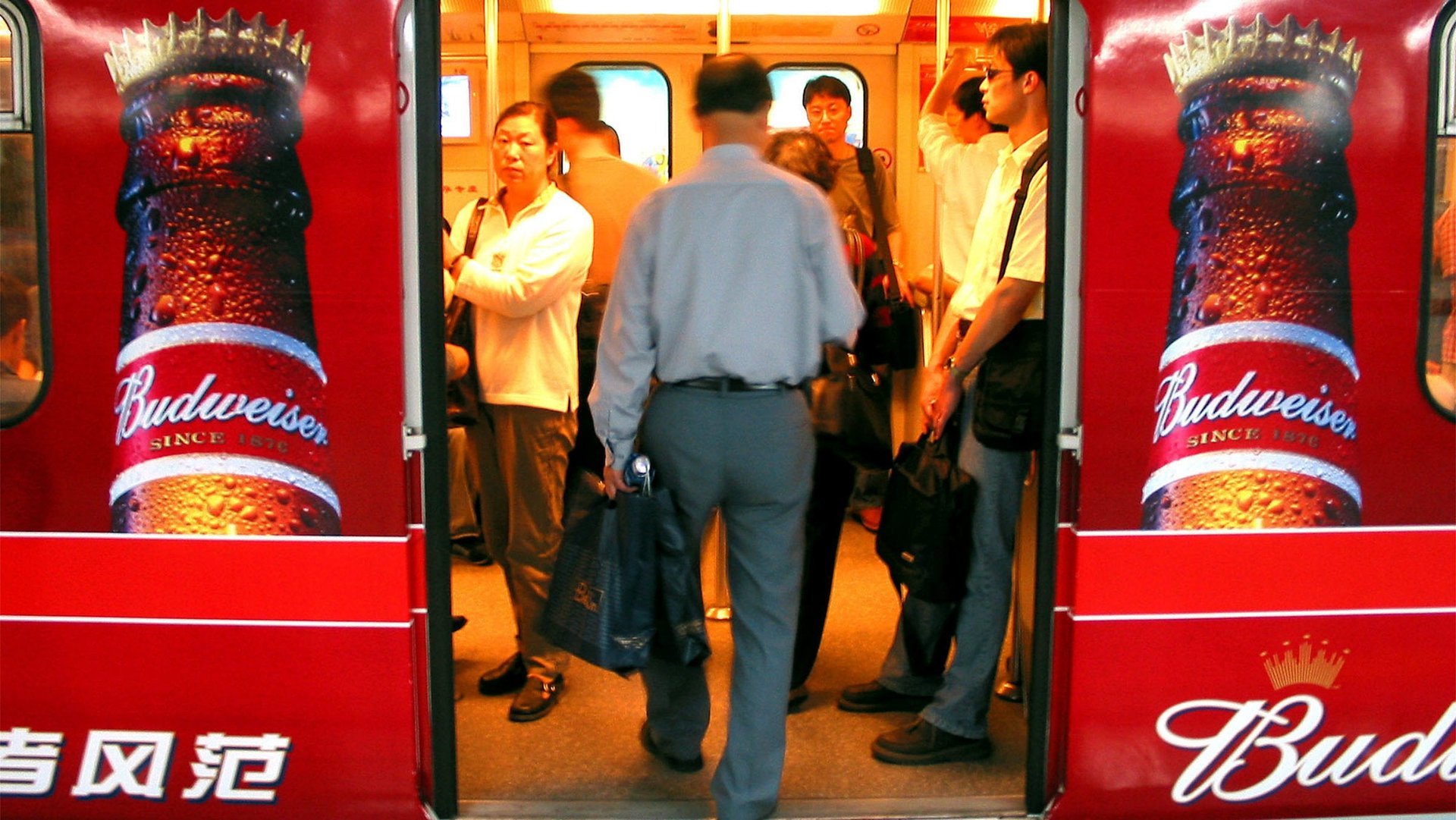All-American brands like Budweiser and KFC take a beating at home but are thriving internationally
When does an American brand stop being a brand for Americans?


When does an American brand stop being a brand for Americans?
For the last four years, Budweiser, once the most American name in beer, has been the property of AB InBev, the global brewing juggernaut that controls nearly half the U.S. beer market. InBev is great at running an efficient international business. It’s not so great at selling Budweiser to Americans. Although Bud Lite remains the best-selling brew in America, Bloomberg Bussinessweek’s reports that Coors Light has bumped Budweiser from the No. 2 slot and (nearly blasphemously) tinkered with the Budweiser recipe “in the name of cost-cutting.”
For all its troubles on the home front, InBev’s head of U.S. marketing says Budweiser is “on fire” overseas, and that last year “44 percent of Bud sales were outside of the U.S., compared with 27 percent three years ago.”
Now, the King of Beers isn’t in danger of disappearing from your local grocery store any time soon. And InBev is attempting to fix its stateside problems by introducing brands such as Bud Light Platinum, a more alcoholic version that’s sold well so far. But two things seem evident: First, Budweiser will soon no longer be a label primarily meant for the U.S. market. Second, InBev is finding out if they can keep selling a beverage as a premium American product abroad while its reputation deteriorates at home.*
And they’re not alone in the experiment. A few months back, Businessweek looked at the similar challenge facing KFC. Colonel Sanders is taking a beating in the U.S., where thanks to uninspired marketing and rundown franchises, the company’s losing ground to competitors like Chick-Fil-A and Popeye’s. At yet, KFC is perched on the brink of worldwide fast-food domination:
KFC has the added distinction of being both the best performer and the biggest headache in the [Yum! Brands] family. In emerging markets such as China, India, and Africa, it’s a muscular player bursting with optimism, innovation, and growth potential. China was home to 3,701 KFC outlets at the end of last year; McDonald’s (MCD) had 1,464. In Africa, KFC plans to enter seven new countries this year (including Uganda, Zimbabwe, and the Democratic Republic of the Congo) and expects to generate $2 billion in sales from 1,200 KFCs across the continent by 2014. In the U.S., which is still KFC’s largest market with 4,780 units, it has closed restaurants and lost share to rivals such as Chick-fil-A and Popeyes. The goal there has been less to rebuild than to “refranchise,” reducing the percentage of company-owned KFCs from 35 percent about a decade ago to 5 percent by the end of this year.
And maybe this balancing act will work. It’s possible these brands will be able to maintain their footprint in the U.S., or even manage their slow decline here, while growing quickly enough in emerging markets to grow their profits. American companies have pulled off similar tricks before. Here, Buick is a struggling line associated with elderly drivers in Florida. But in China, where the Buick Excelle the top-selling passenger vehicle, is this proof that a product’s junky image at home won’t hurt its prospects with consumers half a world away? Maybe. Buick has deep roots in China, where the last emperor was an owner. But it’s a high-profile example that it’s possible for companies to start fresh on the international market.
In which case, it’s not impossible to imagine a future where big American companies continue trading on their U.S. roots, even as they stop needing to care so much about U.S. consumers. This bud? It’s not for us.
__________________________________________
(Yes, for consumers in China and Brazil, Budweiser is a premium beer)